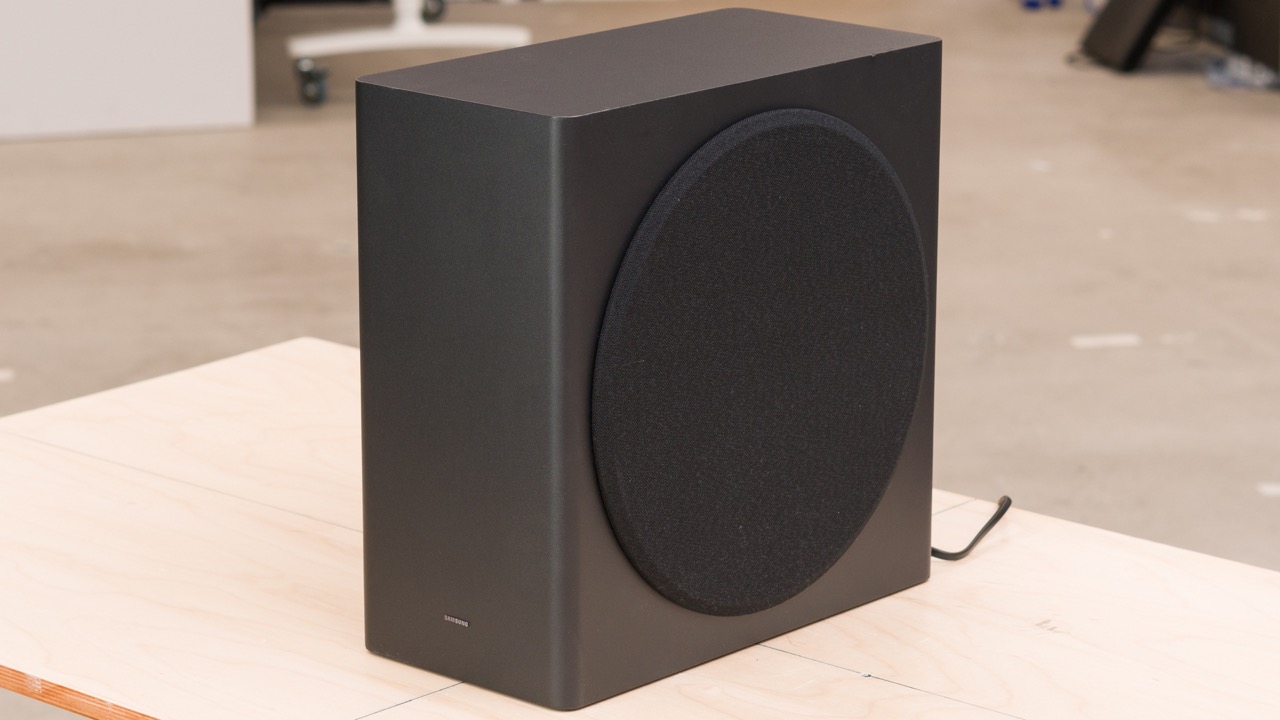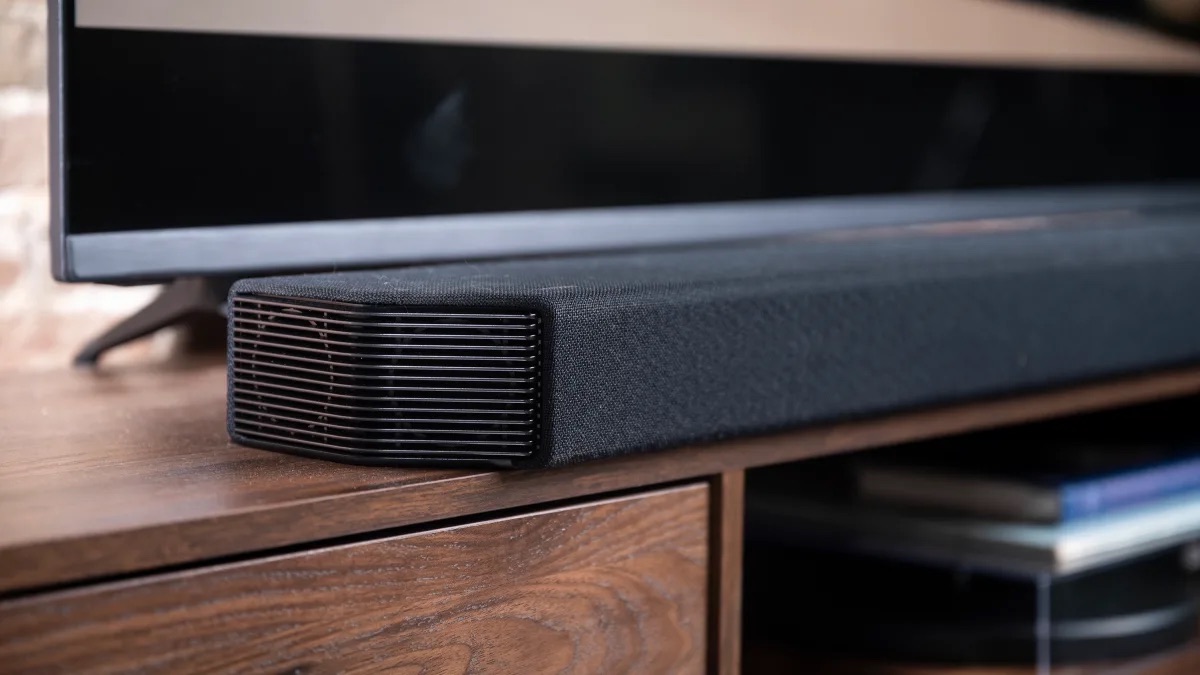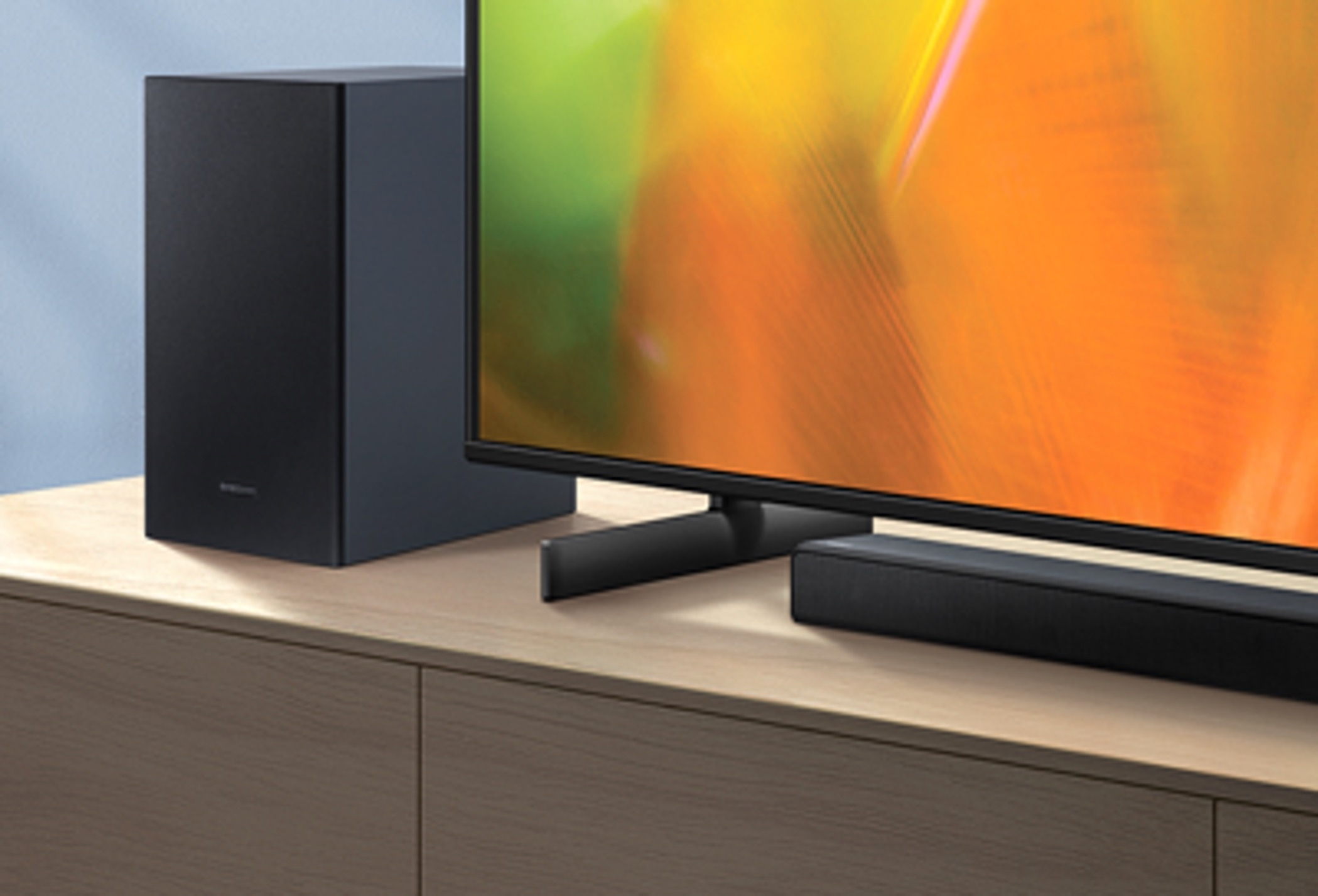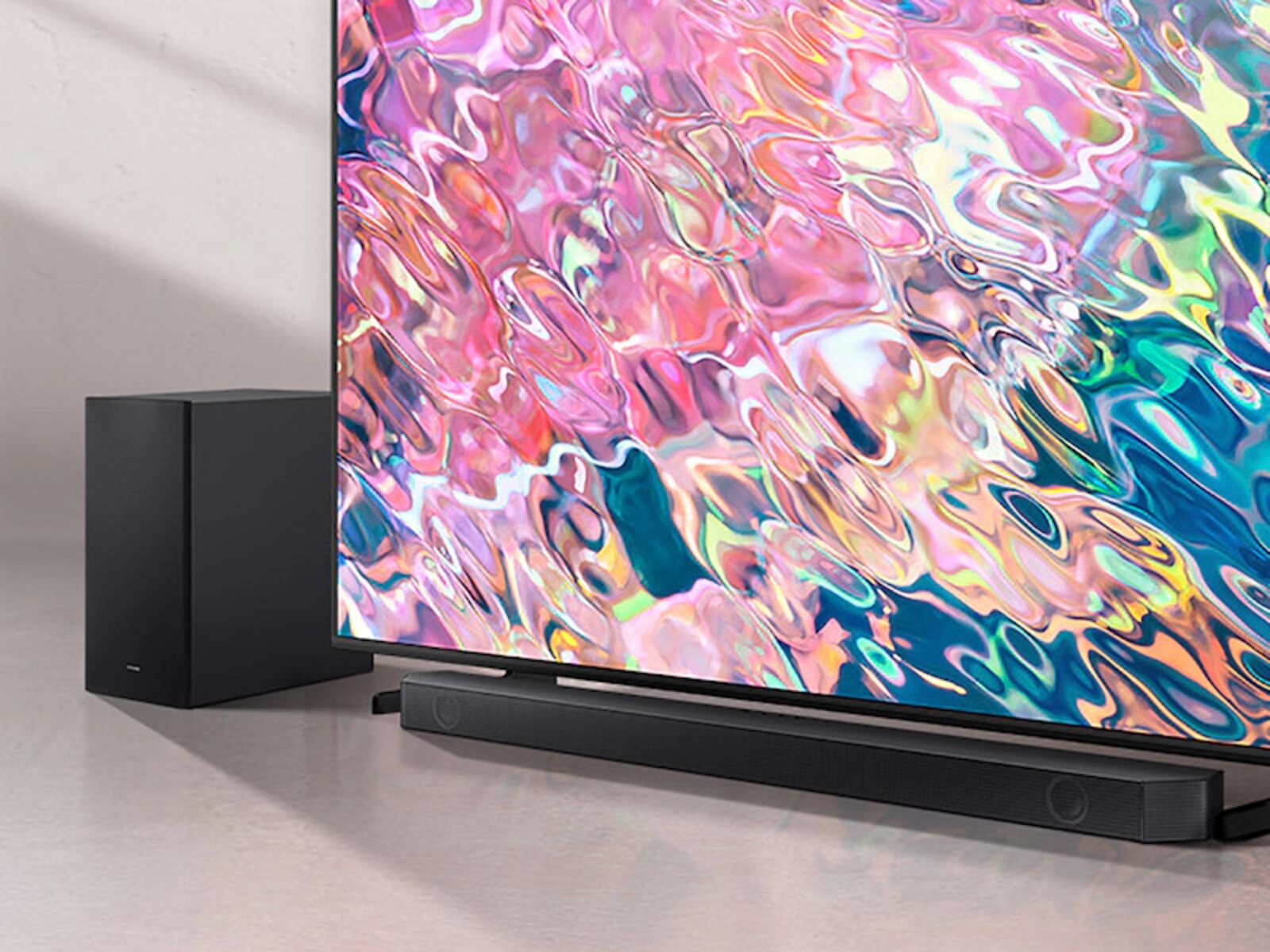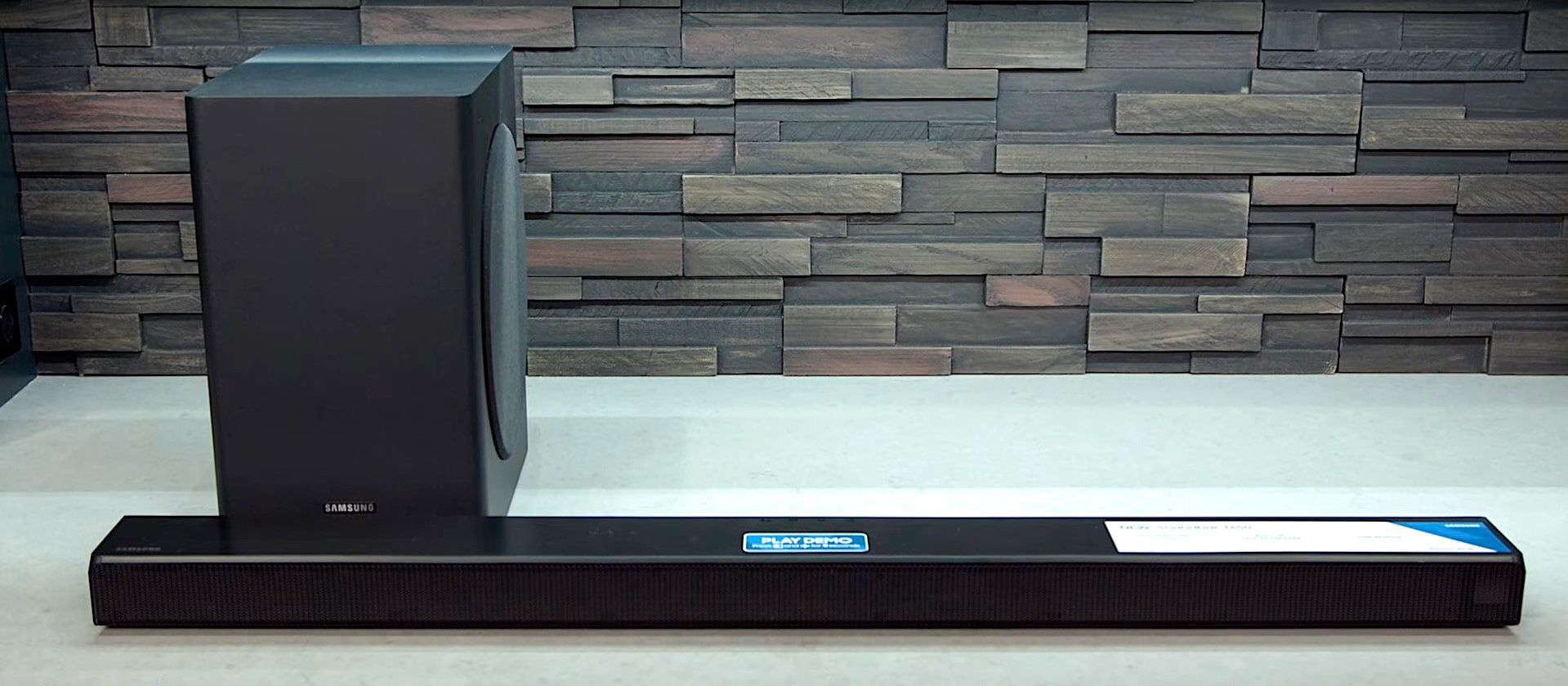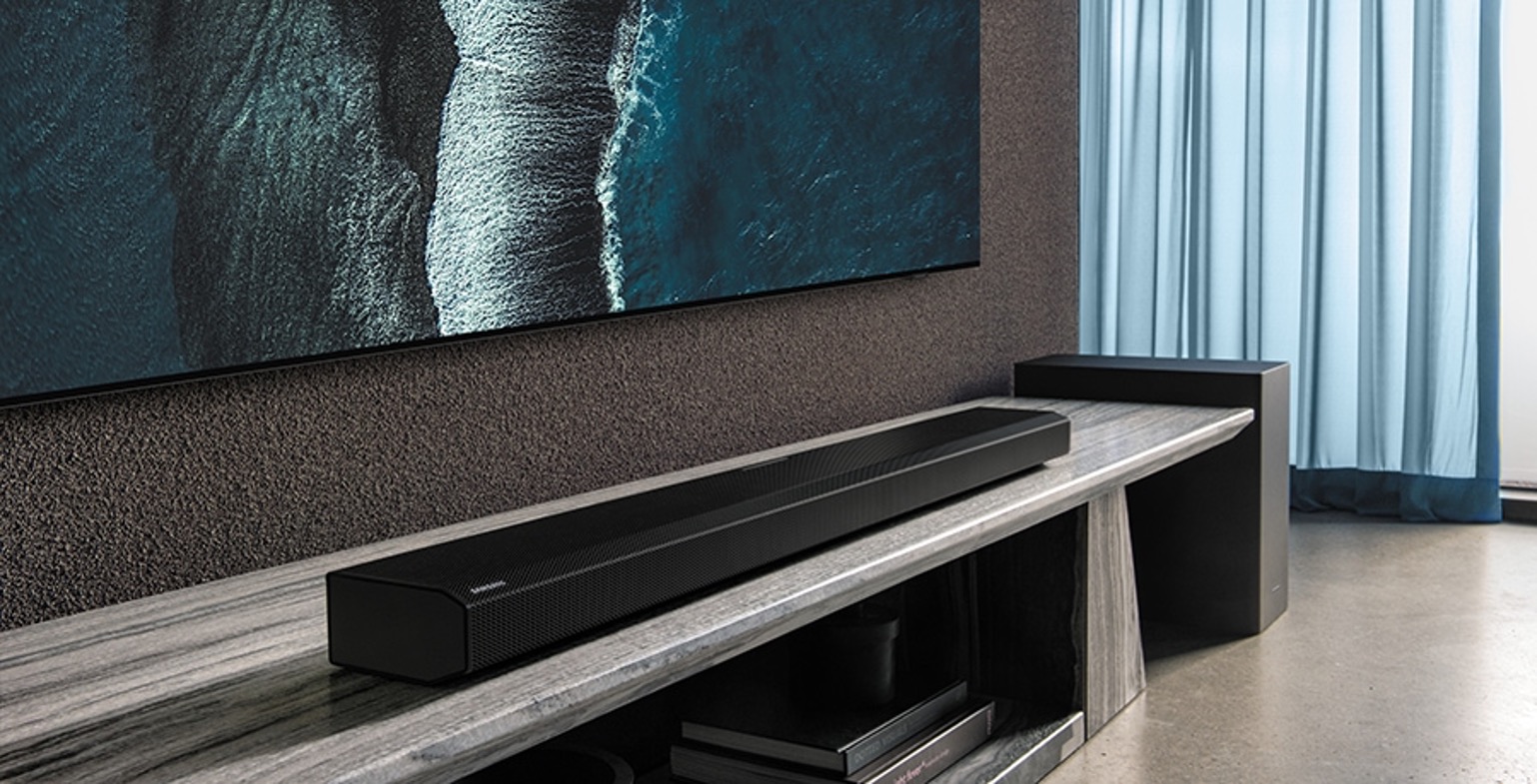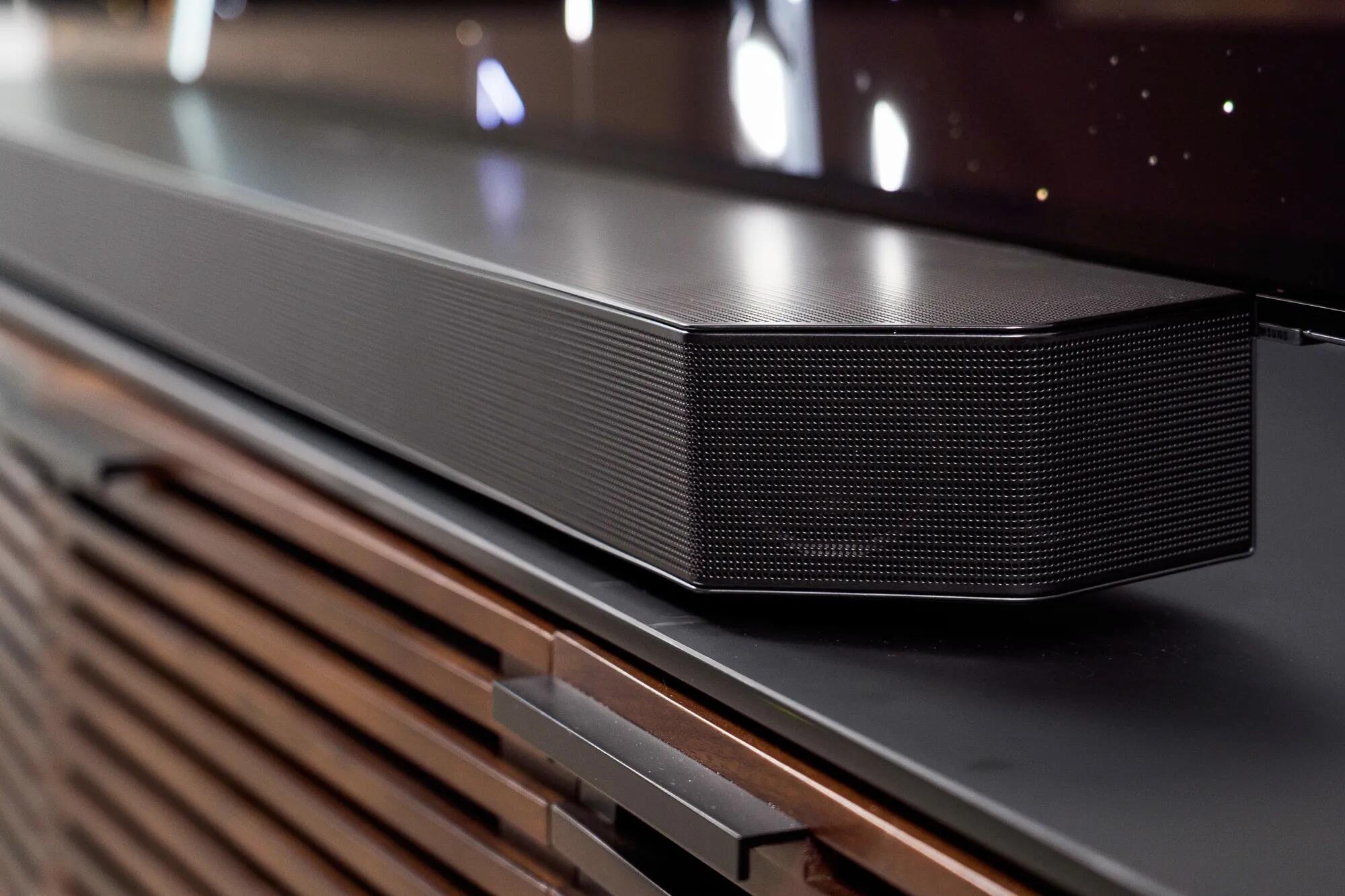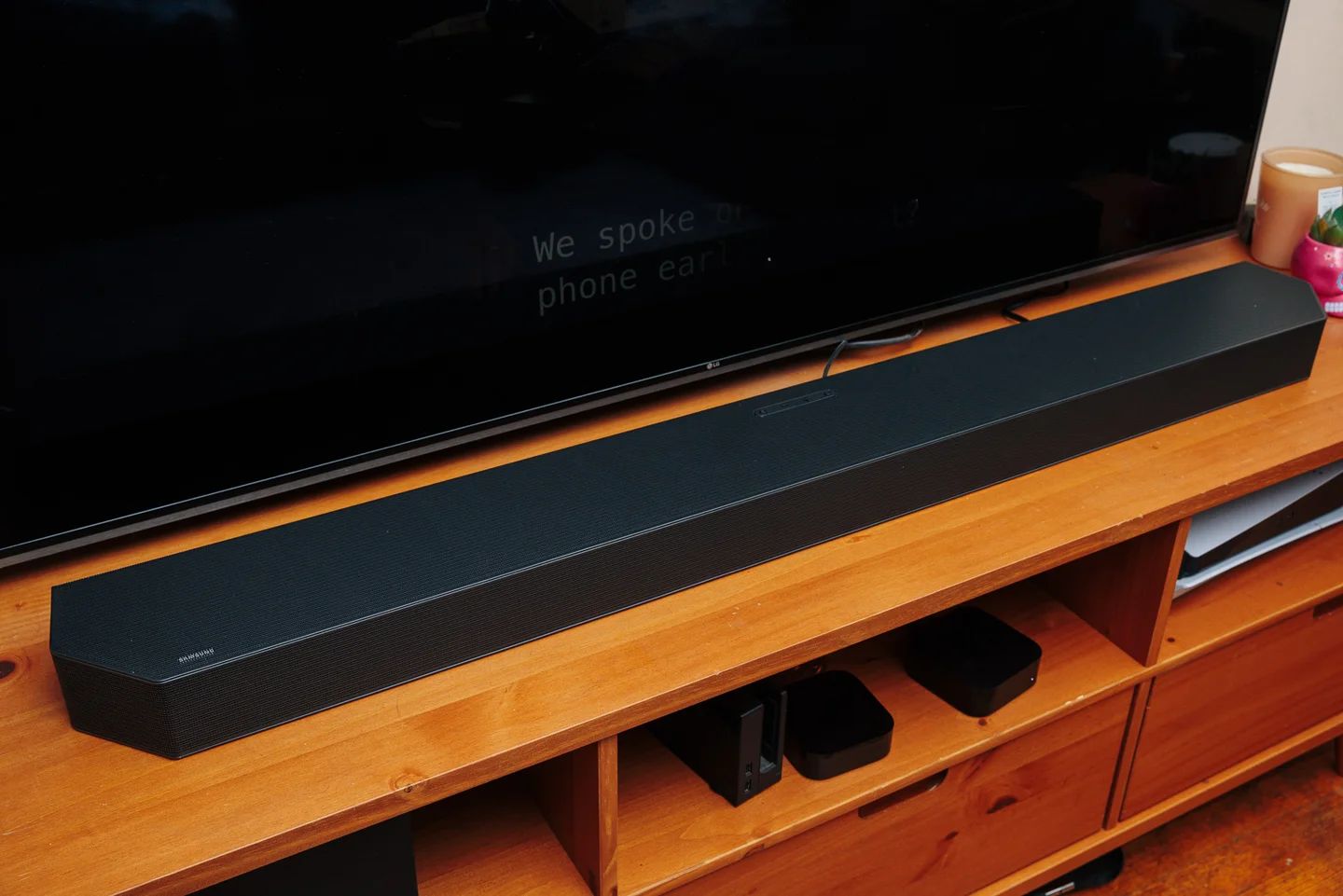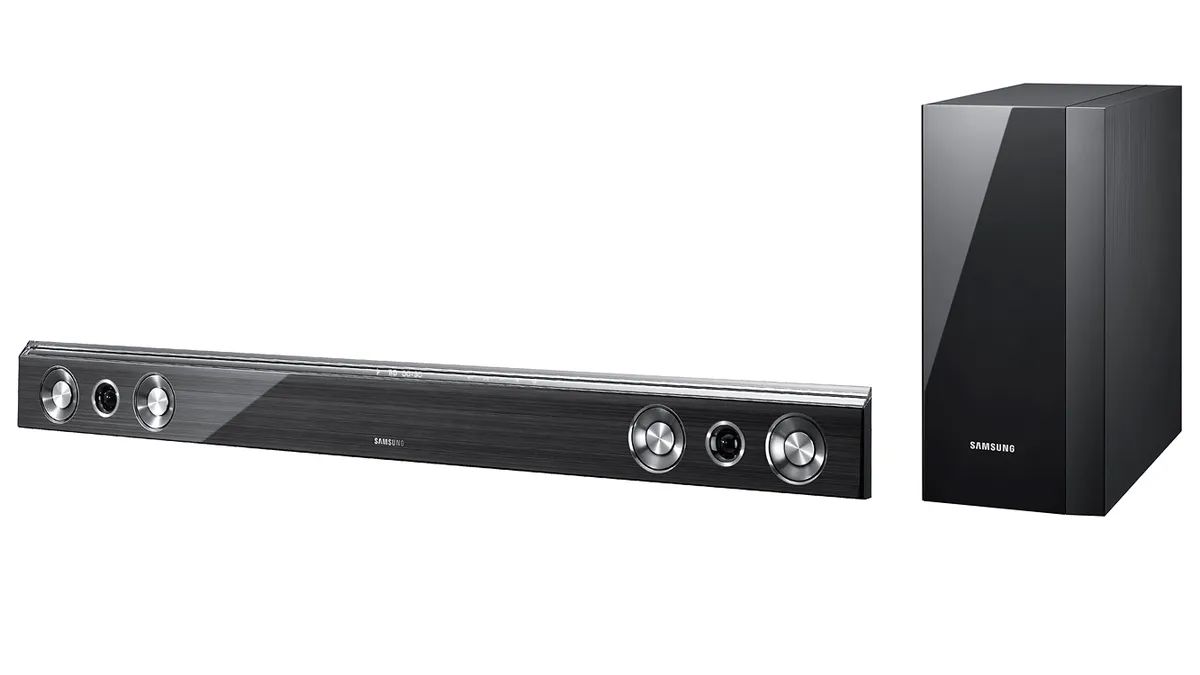Introduction:
Welcome to this comprehensive guide on how to connect your Samsung Soundbar to a subwoofer without a remote. The Soundbar and subwoofer combination provides a cinematic audio experience, immersing you in rich sound while watching movies, playing games, or listening to music.
It can be frustrating when you can’t find the remote or if it is not working. Fortunately, there are several alternative methods you can use to connect the Soundbar to the subwoofer and enjoy high-quality audio without the need for a remote control. In this article, we will walk you through each method step-by-step, so you can easily set up your audio system and start enjoying immersive sound.
Whether you have a Samsung Soundbar with a wireless subwoofer or a model with a built-in subwoofer, these methods will work for you. You will learn how to connect the Soundbar and subwoofer using the Soundbar buttons, the TV remote control, the SmartThings app, or the SoundShare feature.
Before we dive into the methods, it’s important to mention that the specific steps may vary depending on the model of your Samsung Soundbar and subwoofer. It’s always a good idea to consult your user manual for detailed instructions tailored to your specific device. With that said, let’s explore the various methods to connect your Samsung Soundbar to a subwoofer without a remote.
Method 1: Using the Soundbar Buttons
If you don’t have a remote control for your Samsung Soundbar, you can still connect it to the subwoofer using the buttons on the Soundbar itself. Follow these steps:
1. Power on both the Soundbar and the subwoofer. Make sure they are placed within close proximity to each other.
2. On the Soundbar, locate the button labeled “Function” or “Source” and press it to cycle through the available input sources. Keep pressing until you find the correct input source for the subwoofer. This may be labeled as “Subwoofer,” “SW,” or something similar.
3. Once you have selected the correct input source, press and hold the button labeled “Connect” or “Pairing” on the Soundbar for a few seconds. This will put the Soundbar in pairing mode, allowing it to search for the subwoofer.
4. On the subwoofer, locate the button labeled “Connect,” “Pair,” or “Link” and press it within a few seconds of activating pairing mode on the Soundbar.
5. After a few moments, the Soundbar and subwoofer should establish a wireless connection. You may see a notification or hear a beep indicating that the pairing was successful.
That’s it! You have successfully connected the Samsung Soundbar to the subwoofer using the Soundbar buttons. You can now enjoy enhanced audio with deep bass from your Soundbar and subwoofer combination.
Keep in mind that the exact button names and locations may differ depending on your specific Soundbar model. Refer to your user manual for the precise instructions tailored to your device.
Now that you’ve learned how to connect the Soundbar to the subwoofer using the Soundbar buttons, let’s move on to the next method: using the TV remote control.
Method 2: Using the TV Remote
If you have lost or don’t have a remote control for your Samsung Soundbar, you can still connect it to the subwoofer by using your TV remote. This method may not be available on all Soundbar models, but it is worth trying if you have a compatible setup. Here’s how to do it:
1. Ensure that both the Soundbar and the subwoofer are powered on and positioned near each other.
2. Using your TV remote, access the settings menu on your television. Look for an option related to audio or sound settings.
3. Within the audio settings, locate the option for “Sound Output” or “Audio Output.” It may also be labeled as “Speaker Settings” or something similar.
4. When you find the correct settings, navigate to the output options and select the option that represents your Soundbar. This could be labeled as “Soundbar,” “External Speaker,” or something similar.
5. Once you have selected the Soundbar as the audio output, look for an option related to “Subwoofer” or “Bass.” Enable or adjust this option to activate the subwoofer connection.
6. After making the necessary adjustments, exit the settings menu on your TV.
The TV remote will now control the Soundbar and subwoofer together. You can adjust the volume, change audio settings, and manage the subwoofer’s bass level using the TV remote.
Note that the availability of this method depends on the compatibility of your Soundbar and TV. Some Soundbars may not support this feature, or your TV may not have the necessary settings to establish the connection. If this method doesn’t work for you, don’t worry. There are still other options to explore.
Now that you know how to connect the Soundbar and subwoofer using the TV remote, let’s move on to the next method: using the SmartThings app.
Method 3: Using the SmartThings App
If you’re looking for a convenient way to connect your Samsung Soundbar to a subwoofer without a remote, the SmartThings app can come to the rescue. With the SmartThings app installed on your smartphone or tablet, you can easily control and manage your Soundbar and subwoofer. Here’s how to do it:
1. Ensure that your Soundbar and subwoofer are powered on and within range of your mobile device.
2. Download and install the SmartThings app from the Google Play Store or Apple App Store, depending on your device’s operating system.
3. Launch the SmartThings app and sign in to your Samsung account. If you don’t have an account, you’ll need to create one.
4. Once you’re signed in, tap on the “Add Device” or “+” button within the app.
5. Follow the on-screen instructions to add your Soundbar and subwoofer to the SmartThings app. This may involve selecting the appropriate device models or using Bluetooth or Wi-Fi to establish the connection.
6. Once your Soundbar and subwoofer are successfully added, you can control them through the SmartThings app interface. You can adjust the volume, change sound modes, and even customize the equalizer settings to your preference.
The SmartThings app offers a user-friendly and intuitive interface, making it easy to control your Soundbar and subwoofer without the need for a physical remote control. It also provides additional features and functionalities, allowing you to integrate your audio system with other smart devices in your home.
If you encounter any issues during the setup process or while using the SmartThings app, refer to the app’s help section or consult the user manual for your Soundbar and subwoofer models.
Now that you know how to connect your Samsung Soundbar to a subwoofer using the SmartThings app, let’s explore the next method: using the SoundShare feature.
Method 4: Using the SoundShare Feature
If you own a Samsung Soundbar and a Samsung TV, you can take advantage of the SoundShare feature to connect your Soundbar to a subwoofer without a remote. SoundShare allows for seamless wireless audio transmission between compatible Samsung devices. Here’s how to use the SoundShare feature:
1. Ensure that your Samsung Soundbar and TV are powered on and in close proximity to each other.
2. On your TV, access the settings menu and navigate to the audio or sound settings.
3. Look for the SoundShare or SoundConnect option within the audio settings. Activate this feature.
4. On your Soundbar, locate the SoundShare or SoundConnect button. Press and hold this button for a few seconds until the Soundbar enters pairing mode.
5. Within a few moments, your TV should detect the Soundbar and establish the wireless connection.
6. Once the Soundbar and TV are successfully connected, launch the audio settings on your TV and ensure that the Soundbar is set as the audio output device.
7. Now, connect the subwoofer to the Soundbar using the previously mentioned methods, such as using the Soundbar buttons, TV remote, or SmartThings app.
By utilizing the SoundShare feature, you can easily connect your Soundbar to a subwoofer and achieve a seamless audio experience without the need for a remote control. You can enjoy high-quality sound with deep bass, enhancing your movie-viewing or music-listening experience.
Keep in mind that the availability of the SoundShare feature may depend on your specific Soundbar and TV models. Consult the user manuals or support documentation for your devices for more detailed instructions.
Now that you know how to connect your Samsung Soundbar to a subwoofer using the SoundShare feature, let’s move on to some troubleshooting tips if you encounter any issues during the setup process or while using the different methods.
Troubleshooting Tips
While connecting your Samsung Soundbar to a subwoofer without a remote is generally a straightforward process, you may encounter some challenges along the way. Here are a few troubleshooting tips to help you overcome common issues:
1. Ensure Power and Connectivity: First, double-check that both the Soundbar and subwoofer are properly powered on. Ensure that they are within a reasonable distance of each other for an optimal wireless connection. In some cases, moving the subwoofer closer to the Soundbar can improve the signal strength.
2. Reset Both Devices: If you’re facing difficulties connecting the Soundbar and subwoofer, try resetting both devices. Consult the user manuals for specific instructions on how to reset your Soundbar and subwoofer to their factory settings.
3. Check Firmware Updates: Check if there are any firmware updates available for your Soundbar and subwoofer. Updating the firmware can often resolve compatibility issues and improve overall performance. Visit the manufacturer’s website or use their respective apps to check for updates.
4. Verify Compatibility: Make sure that your Soundbar and subwoofer models are compatible with each other. Refer to the user manuals or contact customer support for confirmation. Mismatched models may not be able to establish a wireless connection.
5. Use Wired Connection: If you’re unable to establish a wireless connection, consider using a wired connection between the Soundbar and subwoofer instead. Many Soundbars have an “SW Out” or “Subwoofer Out” port that allows you to connect them using an audio cable.
6. Reposition Subwoofer: If you’re experiencing weak bass or poor sound quality from the subwoofer, try repositioning it in your room. Placing the subwoofer in a corner or against a wall can often enhance the bass response and overall audio experience.
7. Contact Customer Support: If you’ve tried all the troubleshooting steps and are still facing difficulties, don’t hesitate to reach out to the manufacturer’s customer support. They can provide you with further guidance and assistance based on your specific situation.
Remember, troubleshooting can vary depending on the model and setup of your Soundbar and subwoofer. Always refer to the user manuals and consult the manufacturer’s support channels for tailored troubleshooting advice.
Now that you’re armed with these troubleshooting tips, you should be able to overcome any issues that may arise during the connection process. With your Samsung Soundbar and subwoofer successfully connected, you can now enjoy immersive audio in your home entertainment setup.
Conclusion:
Connecting your Samsung Soundbar to a subwoofer without a remote control is entirely possible using alternative methods. Whether you utilize the Soundbar buttons, the TV remote, the SmartThings app, or the SoundShare feature, you can achieve a seamless wireless connection and enjoy enhanced audio in your home entertainment setup.
Throughout this guide, we’ve discussed step-by-step instructions for each method, allowing you to choose the one that best suits your specific requirements and device compatibility. From using the Soundbar buttons to accessing the SoundShare feature, these methods offer flexibility and convenience, even when the remote is not available or not functioning.
Remember to consult the user manuals for your specific Soundbar and subwoofer models, as the exact steps may vary. Firmware updates, troubleshooting tips, and contacting customer support are additional avenues to explore if you encounter any difficulties during the setup process.
With your Samsung Soundbar and subwoofer successfully connected, you can now immerse yourself in high-quality audio, whether you’re watching movies, playing games, or listening to your favorite music. The combination of the Soundbar and subwoofer delivers rich and impactful sound, enhancing your overall entertainment experience.
We hope this guide has been helpful in assisting you with connecting your Samsung Soundbar to a subwoofer without a remote control. Now, go ahead and enjoy the powerful and immersive audio experience that your Soundbar and subwoofer setup provides!







